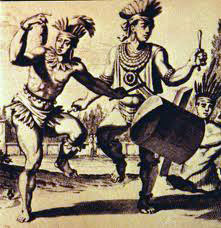Background on the
Democratic Republic of Congo during the Cold War
Democratic Republic of Congo during the Cold War
IIn 1960, the Congo became independent from Belgium after 75 years of colonial rule. Patrice Lumumba became its first democratically elected Prime Minister. Lumumba ran on a nationalist platform. He believed the mines and companies of the Congo should belong to the Congolese people. He also didn’t trust authorities from Belgium, or any nation allied with Belgium (such as the United States.)
In the first few weeks of Lumumba’s administration, Lumumba faced a crisis. The richest part of the Congo, the state of Katanga, tried to break away and form their own country. There were many foreign owned companies in Katanga that were worried about Lumumba nationalizing them.
A mini - civil war broke out, called the Katanga Crisis. Lumumba had to use military force to keep the state of Katanga in the Congo. However, the army of the Democratic Republic of Congo wasn’t strong enough to force Katanga to stay on its own. It had to get military assistance from somewhere else.
The choices Lumumba made in the Congo Crisis ultimately led to United States involvement in the Congo. Make you own predictions about what happened and check your predictions as you start your research.











